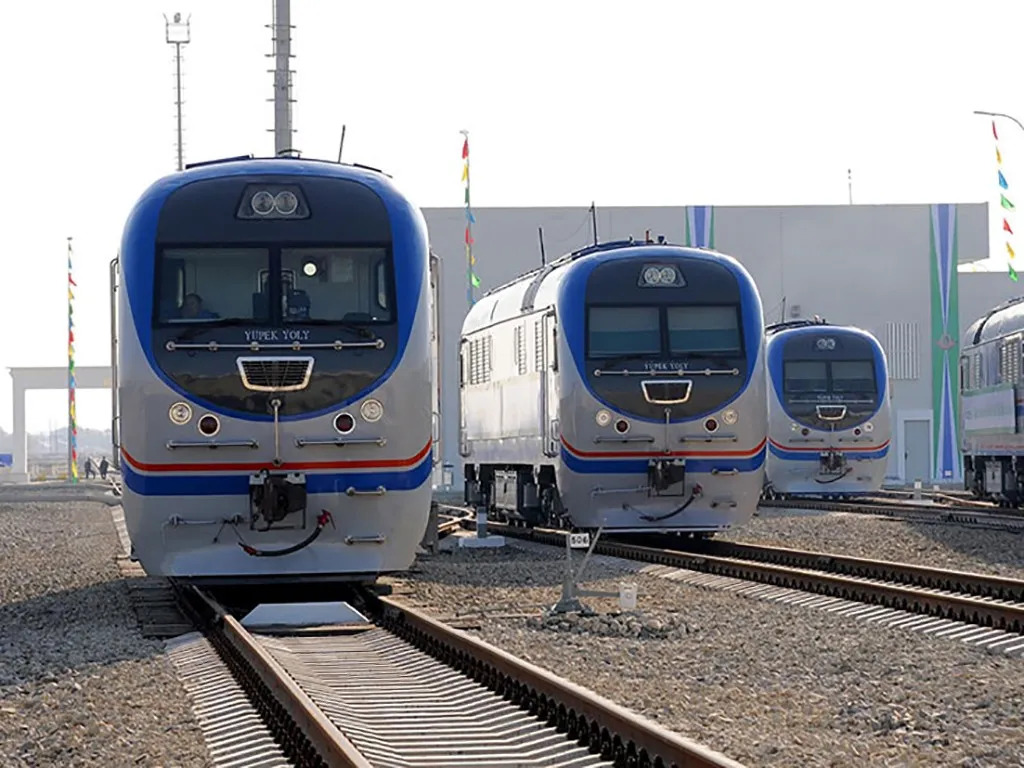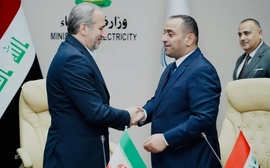Turkmen President Serdar Berdimuhamedow expects that the launch of the Afghanistan-Turkmenistan-Azerbaijan-Georgia-Türkiye (Lapis Lazuli) international transport corridor in the future will bring the regional transport system to a new level.
Addressing the conference and exhibition International Transport and Transit Corridors: interconnection and development (ITCC-2023), held in Ashgabat on May 3-4, the President highlighted a number of connectivity projects currently promoted by Turkmenistan.
The projects include the Ashgabat-Turkmenbashi highway, a highway and a bridge over Garabogaz Bay on the Turkmenbashi-Kazakhstan route, the Turkmenistan-Iran-Iraq-Türkiye transport corridor, the Uzbekistan-Turkmenistan-Iran-Oman corridor, and, the Afghanistan-Turkmenistan-Azerbaijan-Georgia-Türkiye corridor (Lapis Lazuli), Turkmenistan Today reported.
"In the future, an East-West transport corridor will be launched, which will connect Turkmenistan, Iran, Iraq and Türkiye," the President said.
“All countries in the region are focused on further activation of the international transport corridor Uzbekistan-Turkmenistan-Iran-Oman, and the creation of a corridor along the route Afghanistan-Turkmenistan-Azerbaijan-Georgia,” he added.
"The implementation of the five-sided agreement on creating the Afghanistan-Turkmenistan-Azerbaijan-Georgia-Türkiye (Lapis Lazuli) international transport corridor will bring the regional transport system to a new level," the President said.
Targeted measures are also being taken to attract major investments to enhance Turkmenistan’s position as a key transport and transit hub, create new corridors and dedicated infrastructure, he noted.
“Turkmenistan, having access to the open sea, is actively integrating into the trans-Caspian communication routes and strives to maximize the potential in this area. In turn, the construction of an international seaport has significantly expanded the national marine fleet, increased the volume of cargo and transit traffic, and improved the quality of service for foreign vessels,” Berdimuhamedow said.
The Turkmen leader said that connecting the high-speed road linking the eastern region and the centre of the country to the Ashgabat-Turkmenbashi motorway would provide access for trucks from Uzbekistan to the International Sea Port on the Caspian Sea, and from there to the Caucasus, Europe, southern Russia and northern Iran, to the Persian Gulf and Oman Strait via sea lanes.
He noted that constructing the highway and the bridge across Garabogaz on the Turkmenbashi-Kazakhstan route will significantly increase the transport and trade partnerships and cargo turnover between the two countries.
Turkmenistan and Kazakhstan had already established cooperation in rail freight transport, the transport of goods to the Gulf countries, the Indian Ocean region and Europe along the transnational railway line Kazakhstan-Turkmenistan-Iran.
The effective use of existing infrastructure is becoming the dominant principal for developing of integrated transport systems, including railways, motorways, airports, inland waterways, seaports and pipelines, the government earlier said.
This is illustrated by the Ashgabat Declaration adopted at the International Conference in 2014, by the Almaty Declaration and the New Programme of Action for Landlocked Developing Countries for 2014-2024 that aim to build systematic collective efforts to overcome the barriers to transport and trade.
Afghanistan, Turkmenistan, Azerbaijan, Georgia, and Türkiye signed an agreement in 2017 on the creation of the Lapis Lazuli transport corridor, which originates in Afghanistan. It is composed of overland routes that pass through Turkmenistan followed by ferry connections across the Caspian Sea to Azerbaijan; from there, goods continue by rail to Georgia, Türkiye, and, potentially, on to Europe.
As a part of Eurasian connectivity and the Middle Corridor, the Lapis Lazuli transport corridor will serve to deepen regional integration by creating new opportunities to increase trade volume.
The Middle Corridor, which is a crucial strategic transit project for Central Eurasia, gained value after the crisis in the northern corridor amid the Russia-Ukraine war.
It brings an alternative route to the northern and southern routes as well as supplements China-Central Asia-West Asia Economic Corridor under the Belt and Road Initiative (BRI). Middle Corridor presents a faster and shorter connection to the Balkans, as well as Western and Northern Europe.







 The Islamic holy month of fasting, Ramadan comes to an end this week with the celebration of a joyous festival called Eid (meaning “festival” in Ar...
The Islamic holy month of fasting, Ramadan comes to an end this week with the celebration of a joyous festival called Eid (meaning “festival” in Ar...
 Iran's President Ebrahim Raisi extended condolences to the Chairman of the Political Bureau of the Palestinian Hamas group, Ismail Haniyeh, followi...
Iran's President Ebrahim Raisi extended condolences to the Chairman of the Political Bureau of the Palestinian Hamas group, Ismail Haniyeh, followi...
 The number of evacuees from flooded areas in Kazakhstan has reached 97,852 people, including about 32,856 children since March 27.
The number of evacuees from flooded areas in Kazakhstan has reached 97,852 people, including about 32,856 children since March 27.



